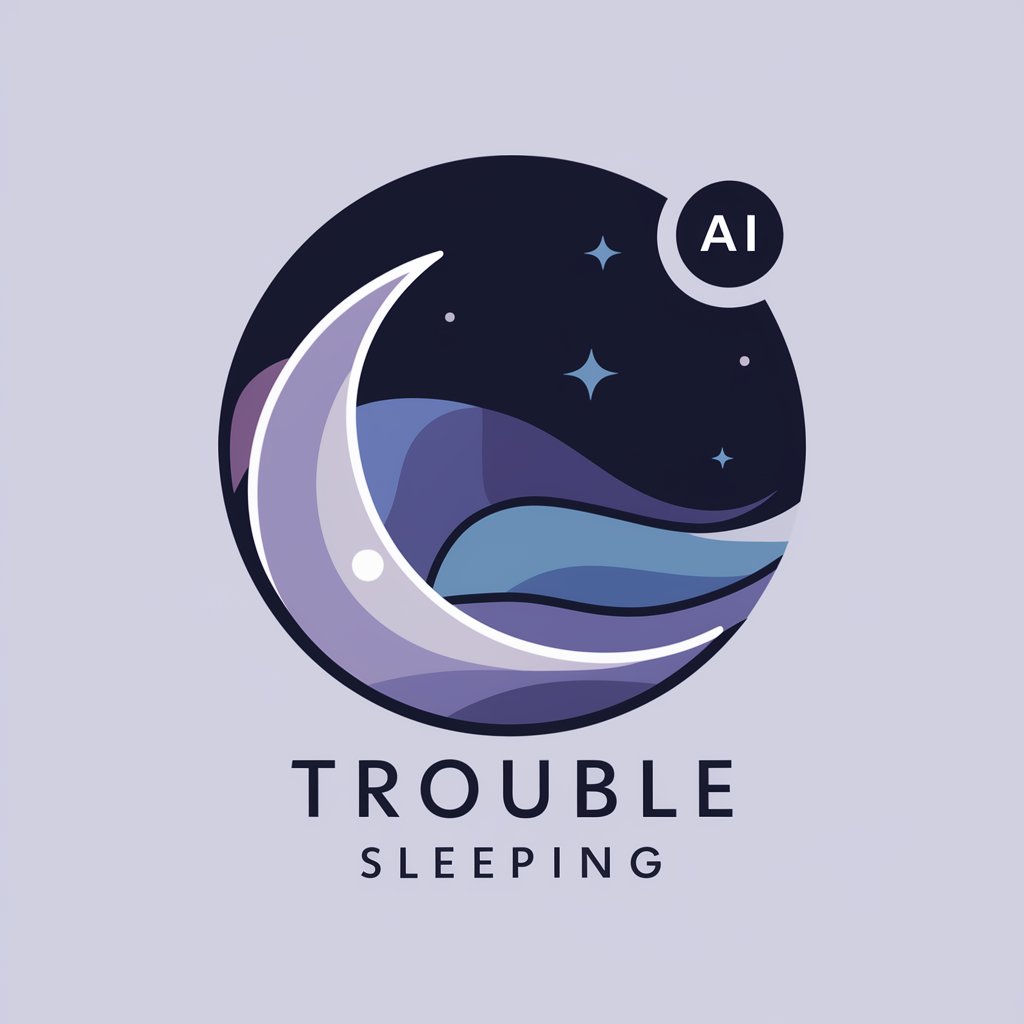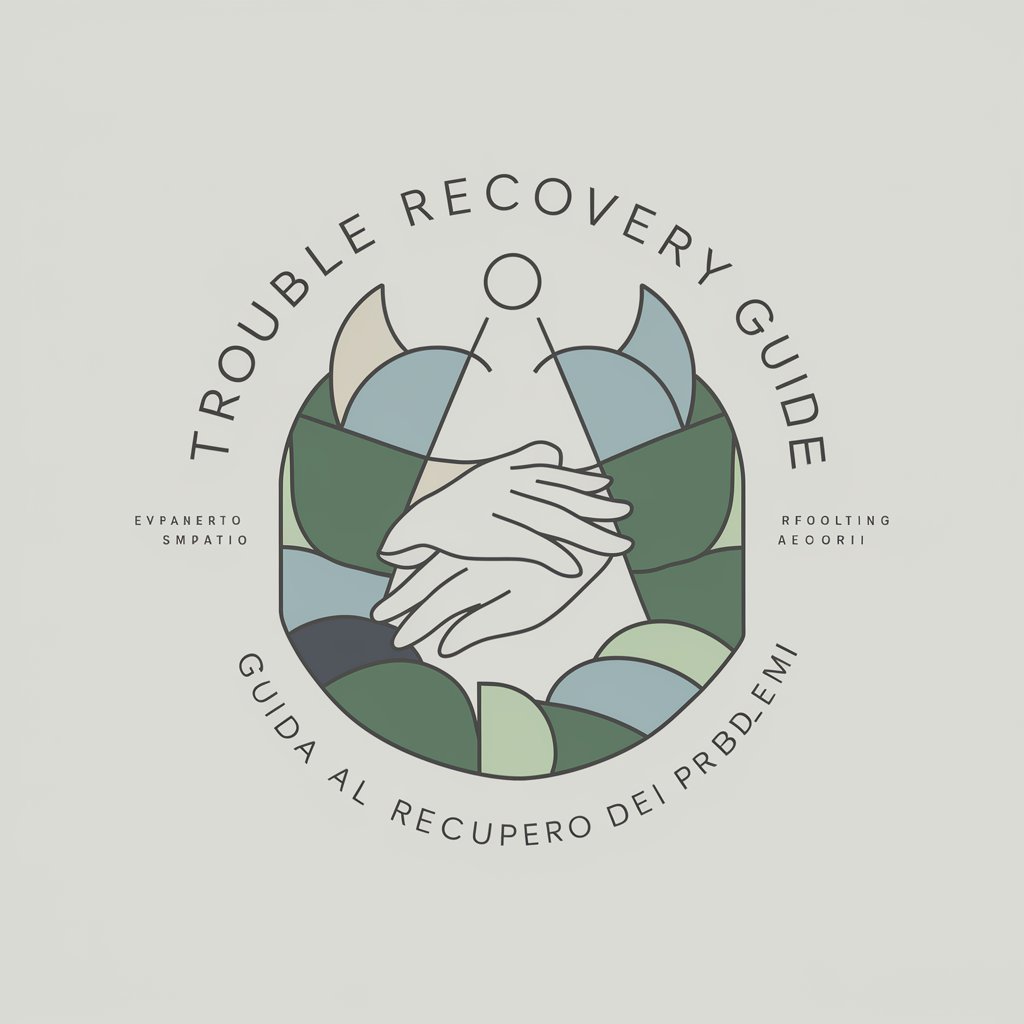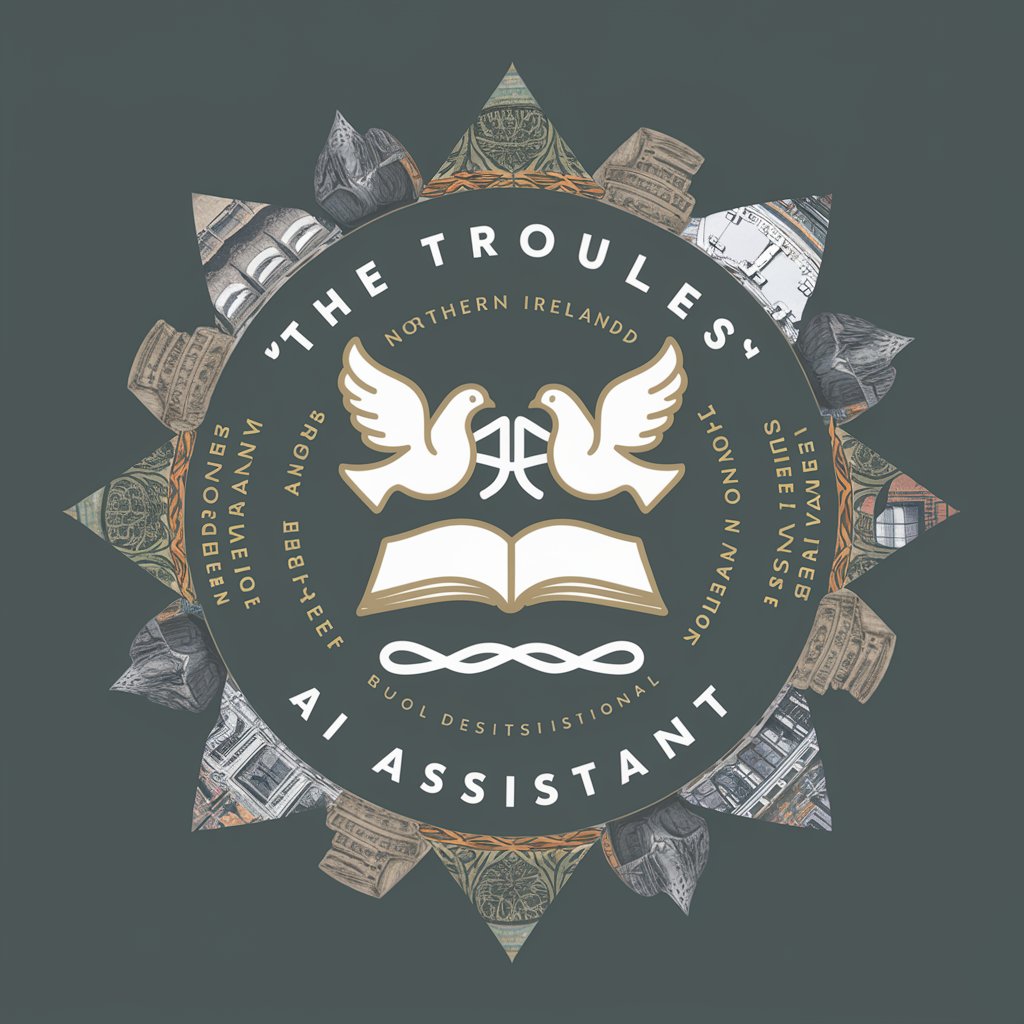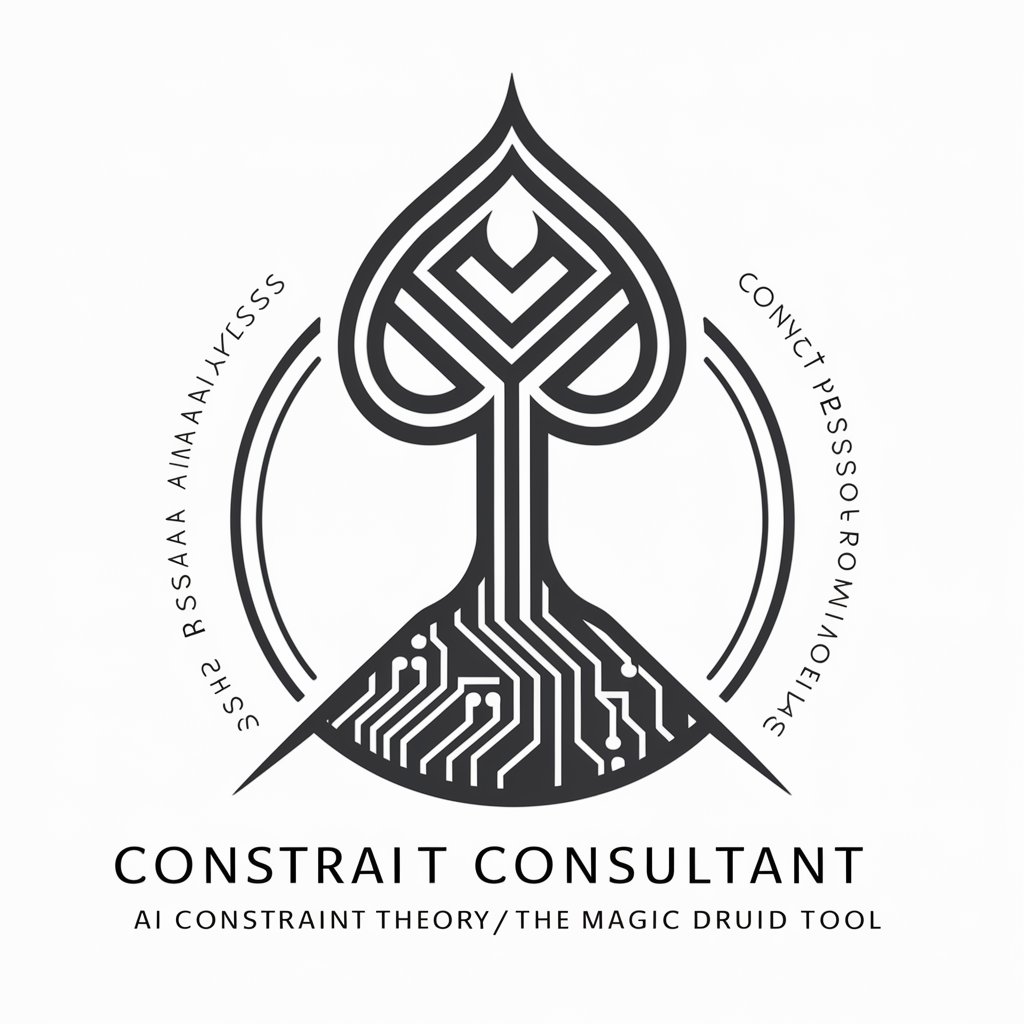Trouble Sleeping - AI-Powered Sleep Assistant

Welcome to Trouble Sleeping, your guide to better rest.
Sleep smarter, not harder, with AI
Log your sleep patterns to start improving your rest.
Discover relaxation exercises tailored to your preferences.
Learn about sleep hygiene to enhance your nightly routine.
Receive personalized sleep advice based on your habits.
Get Embed Code
Overview of Trouble Sleeping
Trouble Sleeping is an advanced AI-driven platform designed to help individuals improve their sleep quality through personalized insights and recommendations. The tool combines user-input data with machine learning to analyze sleep patterns and provide actionable advice tailored to each user's unique needs. Key features include a sleep diary for tracking sleep habits, relaxation and mindfulness exercises tailored to the user's preferences, educational content on sleep-related topics, and personalized reminders to encourage good sleep practices. For instance, a user might log their daily sleep times and disturbances, and Trouble Sleeping could identify trends such as late caffeine consumption affecting sleep quality, suggesting earlier cutoff times for better rest. Powered by ChatGPT-4o。

Key Functions of Trouble Sleeping
Sleep Diary
Example
A user logs their sleep time, duration, and quality daily.
Scenario
The AI analyzes this data to identify patterns, such as a correlation between exercise in the evening and improved sleep quality, suggesting more consistent timing for workouts to enhance sleep.
Relaxation and Mindfulness Exercises
Example
Customizable audio and visual exercises designed to relax the mind before bedtime.
Scenario
A user feels anxious at bedtime. The platform suggests a guided breathing exercise, reducing anxiety and facilitating a quicker and smoother transition to sleep.
Educational Content
Example
Articles, videos, and infographics about sleep hygiene, the effects of sleep deprivation, and the benefits of a good night's sleep.
Scenario
A user consistently uses electronic devices before bed. Trouble Sleeping provides educational content on blue light's impact on melatonin production and suggests practical tips like using blue light filters or establishing a 'no-screens' policy 30 minutes before bedtime.
Personalized Reminders
Example
Automated notifications remind users of optimal bedtimes and other sleep-related activities.
Scenario
To help establish a consistent sleep schedule, the user receives a reminder to start winding down activities an hour before the set bedtime, encouraging routines like reading or meditation that promote sleep readiness.
Ideal Users of Trouble Sleeping
People with irregular sleep schedules
Individuals like shift workers or frequent travelers who struggle with maintaining a consistent sleep pattern would benefit from personalized sleep tracking and advice to mitigate the impacts of their erratic lifestyles on sleep.
Individuals experiencing sleep disturbances
People who suffer from insomnia, frequent awakenings, or other sleep disorders can use the platform's insights and tailored strategies to identify triggers and implement behavioral changes that promote better sleep.
Health-conscious individuals
Those interested in overall wellness often focus on diet and exercise but overlook sleep. Trouble Sleeping helps integrate sleep quality into their health regimen, providing data and tools to improve sleep as part of a holistic approach to health.

Getting Started with Trouble Sleeping
Initiate Free Trial
Begin your journey towards better sleep by visiting yeschat.ai, where you can access Trouble Sleeping's free trial without any need to sign up or subscribe to ChatGPT Plus.
Log Sleep Patterns
Utilize the interactive sleep diary feature to log your daily sleep patterns, including bedtime, wake-up times, and any night-time awakenings. This detailed logging is crucial for identifying patterns and areas of improvement.
Explore Content Library
Dive into the extensive content library, which offers a variety of relaxation and mindfulness exercises. Customize these resources to suit your preferences and incorporate them into your nightly routine for enhanced sleep quality.
Set Customizable Reminders
Enable customizable reminders to maintain consistent sleep habits. Regular reminders to prepare for bed or engage in relaxation exercises can help establish a healthy sleep routine.
Provide Feedback
Participate in the feedback mechanism by rating and commenting on the advice and resources provided. Your input helps improve Trouble Sleeping, ensuring it continually evolves to meet user needs.
Try other advanced and practical GPTs
Troubles-Dude
Empowering Change, Enhancing Lives

Double Exposure Prompt by Prompt Snapshot
Seamlessly Blend Imagination with Reality

Market Maven
Unravel market dynamics with AI

Labor Market Exposure to AI
Navigating Workforce Transformations with AI

bravesteps.love - Exposure Therapy
Conquer Your Fears with AI

Social Stage Strategist
Amplify Events with AI Power

Trouble consultation
Insightful advice, AI-enhanced

Texas Troubles: A Murder Mystery
Solve mysteries with AI-driven narratives

Trouble Recovery Guide
Empowering you with AI-driven guidance

The Troubles
Explore the Troubles: An AI-Powered Historical Journey

Trouble Terminator
Decoding Dilemmas, Delivering Solutions

Problem Solver: From trouble to harmony.
Harmonize conflicts with AI insight

Frequently Asked Questions About Trouble Sleeping
How does Trouble Sleeping personalize sleep improvement advice?
Trouble Sleeping uses adaptive AI to analyze your logged sleep patterns and feedback over time. It identifies trends and areas for improvement, offering increasingly personalized advice and recommendations based on your unique sleep habits.
Can Trouble Sleeping help with insomnia?
Yes, Trouble Sleeping offers tools and resources specifically designed to address insomnia. By logging sleep patterns and engaging with the content library's relaxation exercises, users can find strategies to improve sleep quality and reduce insomnia symptoms.
Is Trouble Sleeping suitable for shift workers?
Absolutely. Trouble Sleeping is designed to accommodate various sleep schedules, including those of shift workers. It offers tailored advice to help manage irregular sleep patterns and maximize restorative sleep.
How does the feedback mechanism work?
Users can rate and provide comments on the advice and resources received. This feedback is crucial for refining the tool's recommendations, ensuring they are effective and relevant to the user's needs.
What makes Trouble Sleeping different from other sleep aids?
Trouble Sleeping stands out due to its AI-powered, personalized approach to sleep improvement. It offers an interactive sleep diary, a rich content library, customizable reminders, and a user-driven feedback system, all designed to adapt to individual user preferences and needs.
